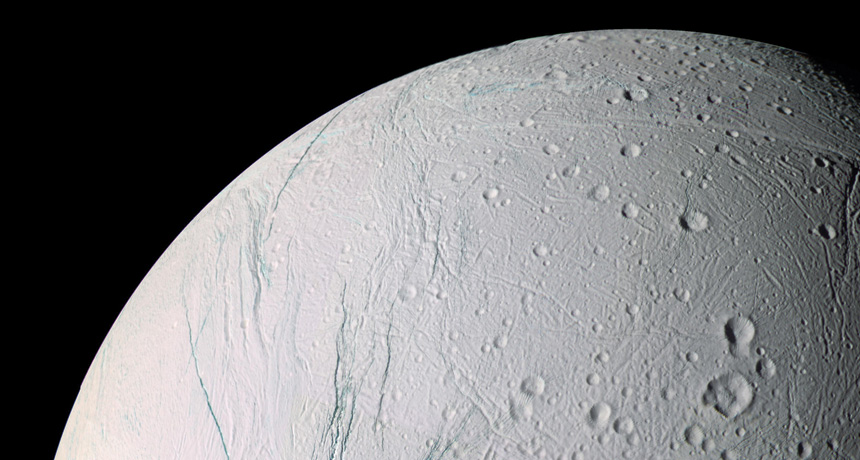Year in review: Ocean may power Enceladus’ geysers
Evidence favors sea under Saturnian moon’s surface

ENCELADUS' OCEAN This year, data from the Cassini spacecraft strengthened the case for a subsurface ocean on Saturn's moon Enceladus that drives ice geysers on the moon’s south pole.
JPL-Caltech/SSI, NASA